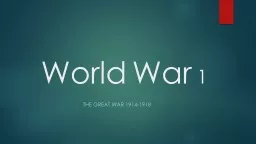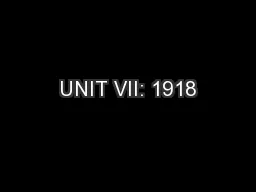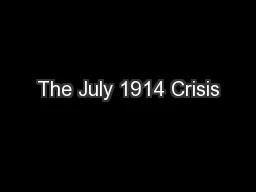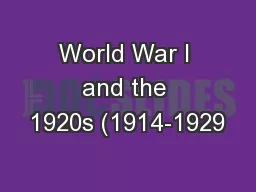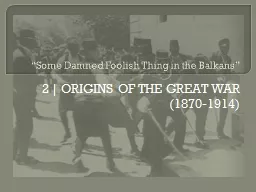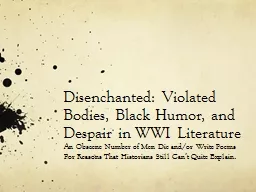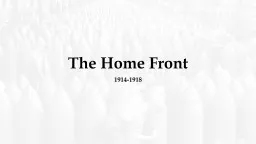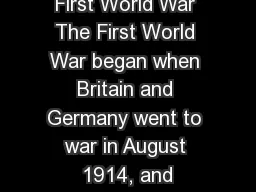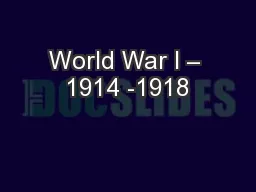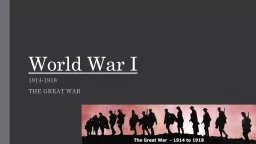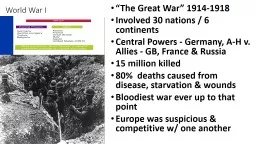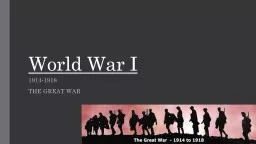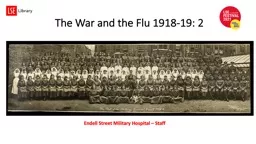PPT-World War 1 The Great war 1914-1918
Author : myesha-ticknor | Published Date : 2018-10-29
The Great War World War I The War to End All Wars The lamps have gone out all over Europe and we shall not see them lit again in our lifetime British Prime Minister
Presentation Embed Code
Download Presentation
Download Presentation The PPT/PDF document "World War 1 The Great war 1914-1918" is the property of its rightful owner. Permission is granted to download and print the materials on this website for personal, non-commercial use only, and to display it on your personal computer provided you do not modify the materials and that you retain all copyright notices contained in the materials. By downloading content from our website, you accept the terms of this agreement.
World War 1 The Great war 1914-1918: Transcript
Download Rules Of Document
"World War 1 The Great war 1914-1918"The content belongs to its owner. You may download and print it for personal use, without modification, and keep all copyright notices. By downloading, you agree to these terms.
Related Documents

